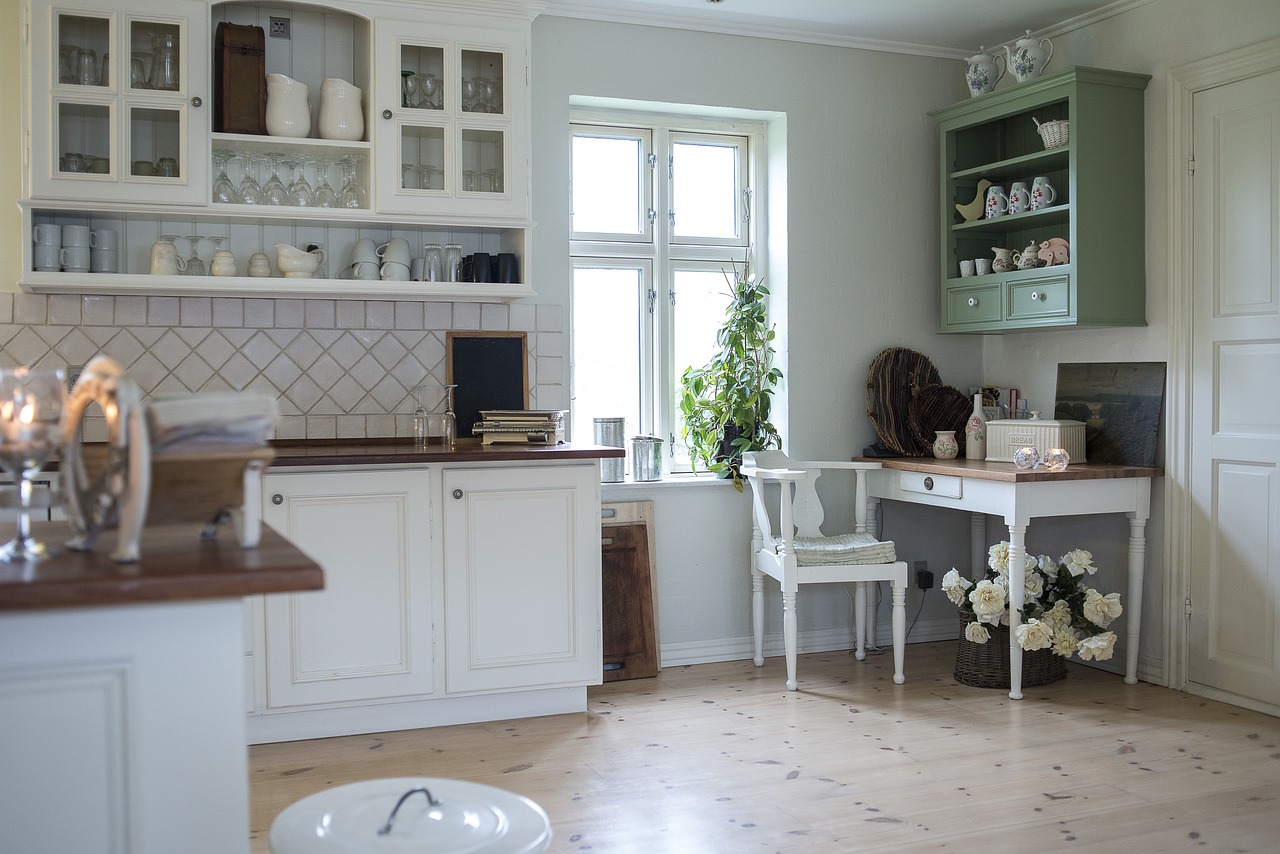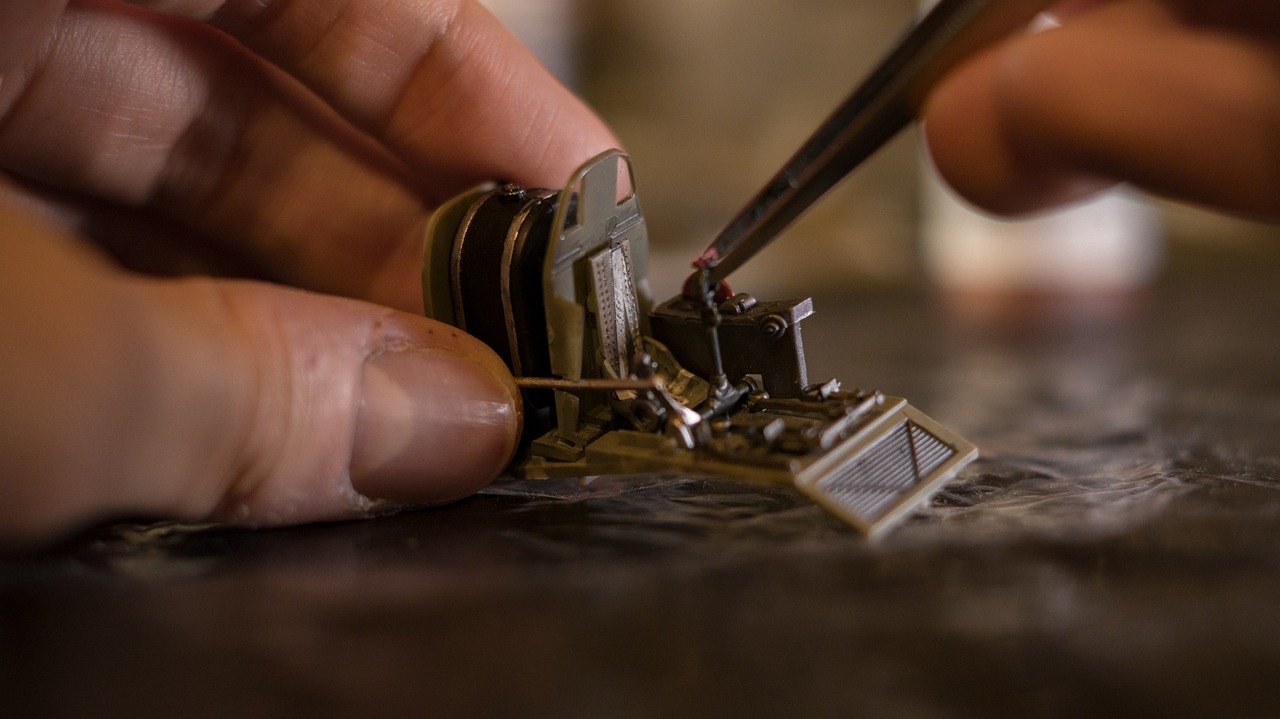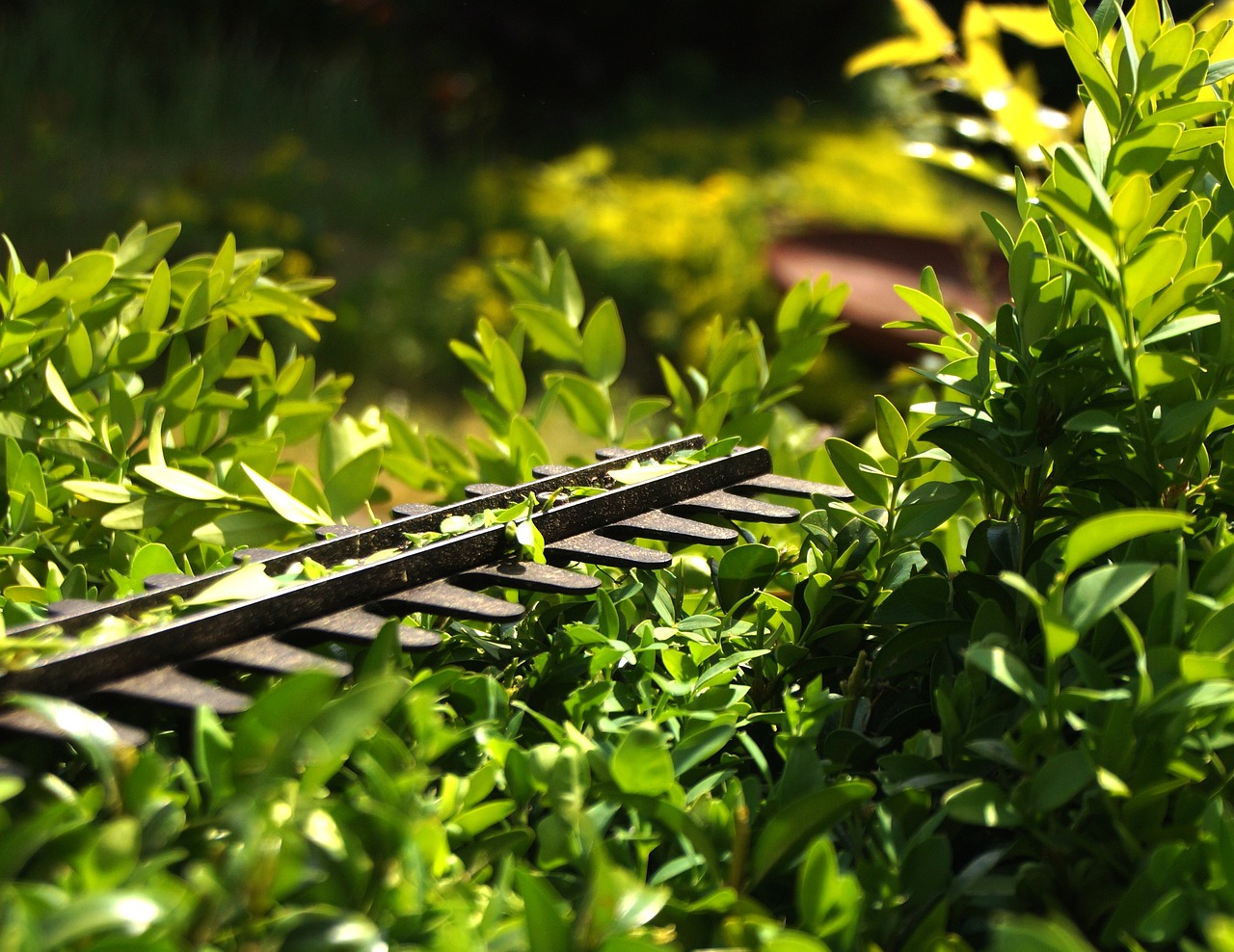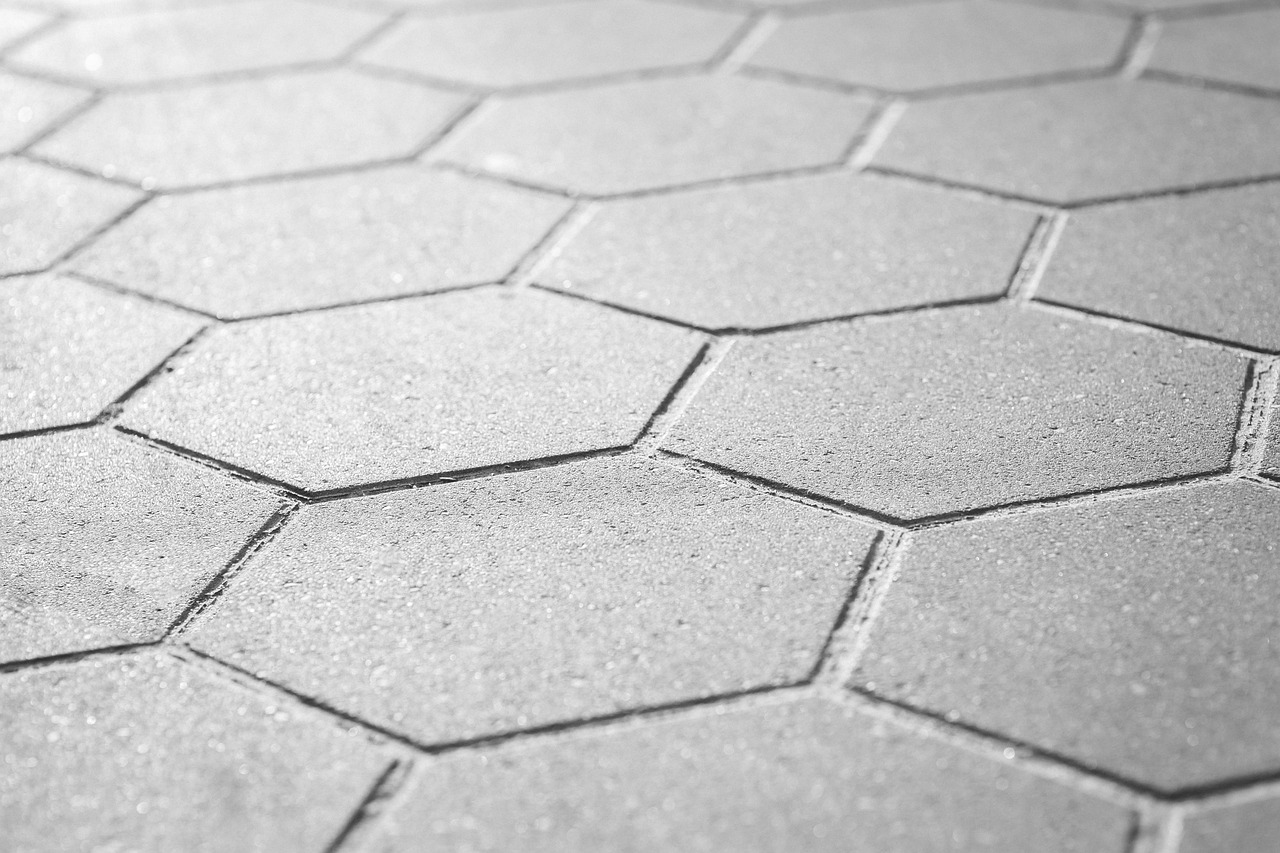How to Create a Trendy DIY Hexagon Shelves
Are you looking to spruce up your home decor with something unique and stylish? Look no further! Creating your own hexagon shelves is not only a fun DIY project but also a fantastic way to add a modern touch to any room. Imagine your favorite plants, books, or decorative items displayed on these eye-catching shelves, making your space feel more inviting and personalized. In this comprehensive guide, we’ll walk you through everything you need to know about designing and constructing these trendy shelves, from choosing the right materials to putting the finishing touches on your masterpiece.
Hexagon shelves are all the rage right now, and for good reason! Their geometric shape adds a contemporary flair that can transform a dull wall into a vibrant focal point. Plus, they’re incredibly versatile; you can create a single shelf or a whole wall of them, depending on your space and style preferences. Whether you want to go for a rustic look with reclaimed wood or a sleek finish with painted MDF, the options are endless. So, roll up your sleeves and let’s dive into the world of DIY hexagon shelves!
Before you start cutting and assembling, it’s crucial to select the right materials for your hexagon shelves. The type of wood you choose can significantly affect both the durability and the overall aesthetic of your shelves. Here are some popular options:
- Pine: Affordable and easy to work with, pine is a great choice for beginners.
- Plywood: Offers strength and stability, perfect for larger shelves.
- Birch: A premium option with a beautiful finish, ideal for a polished look.
In addition to wood, consider the finish you’d like to apply. Stains can enhance the natural grain of the wood, while paints can offer a vibrant pop of color. If you’re feeling adventurous, you might even mix and match finishes for a more eclectic vibe!
Now that you’ve chosen your materials, it’s time to gather the tools necessary for the job. Having the right tools on hand can make the process smoother and more enjoyable. Here’s a quick rundown of what you’ll need:
- Miter Saw: For precise angled cuts.
- Drill: Essential for assembling the shelves.
- Measuring Tape: To ensure accurate dimensions.
- Sandpaper: For smoothing edges before finishing.
With these tools in your arsenal, you’ll be well-equipped to tackle your hexagon shelf project with confidence!
Accurate measurements and precise cuts are fundamental in creating hexagon shelves. The first step is measuring your wood to ensure you have the right dimensions for each hexagonal piece. A standard hexagon consists of six equal sides, so be sure to keep that in mind as you measure. Once you have your measurements down, it’s time to cut!
A miter saw is your best friend when it comes to making angled cuts. To use it effectively, set the angle to 30 degrees for each cut. This will help you achieve the perfect angle for your hexagon shape. Always remember to wear safety glasses to protect your eyes from sawdust!
If you prefer a more traditional approach, a hand saw can also do the trick. While it may take a bit more effort, it’s a great way to connect with the craftsmanship of your project. Just be sure to take your time and use a steady hand to ensure clean cuts.
Once all your pieces are cut, it’s time to bring your hexagon shelves to life! Start by laying out your pieces in the shape of a hexagon. This will help you visualize how they fit together. Use wood glue to secure the edges, and then reinforce with screws for added strength. Make sure everything is aligned properly before the glue sets!
The final appearance of your hexagon shelves can be enhanced with some finishing touches. Whether you choose to paint, stain, or seal your shelves, these options can elevate the look of your DIY project significantly. Take your time with this step, as it can make all the difference!
Choosing between paint and stain can impact the overall aesthetic of your shelves. Paint offers a bold, uniform color, while stain allows the natural beauty of the wood to shine through. Consider the vibe you want to create in your space and choose accordingly.
Finally, applying a sealant can protect your shelves from wear and tear. There are various sealants available, from polyurethane to water-based options. Make sure to follow the manufacturer’s instructions for application to ensure a long-lasting finish.
Q: How much weight can the hexagon shelves hold?
A: The weight capacity will depend on the materials used and how well the shelves are assembled. Generally, if made correctly, they can hold a good amount of weight, but it’s always best to test them with lighter items first.
Q: Can I customize the size of the hexagon shelves?
A: Absolutely! You can adjust the dimensions based on your space and preferences. Just remember to maintain the hexagonal shape when measuring and cutting.
Q: What is the best finish for outdoor hexagon shelves?
A: If you plan to place your shelves outdoors, consider using a weather-resistant sealant to protect against the elements.

Choosing the Right Materials
When it comes to creating your own trendy DIY hexagon shelves, selecting the right materials is essential for both durability and aesthetics. After all, these shelves are not just functional; they are also a statement piece that can elevate your home’s decor. So, what should you consider when choosing materials for your project? Let's dive into the details!
First off, you’ll want to think about the type of wood you wish to use. Different woods have unique characteristics. For example, pine is a popular choice due to its affordability and ease of use, making it perfect for beginners. On the other hand, if you’re looking for something more robust, oak or maple can provide that sturdy feel, though they might stretch your budget a bit. Remember, the wood you select can significantly impact the overall look and feel of your shelves.
Another factor to consider is the finish. The finish can either enhance the natural beauty of the wood or completely transform its appearance. Here are a few options to think about:
- Paint: Great for adding a pop of color or a modern touch.
- Stain: Perfect for showcasing the wood grain while adding richness.
- Natural Finish: Allows the wood’s natural beauty to shine through, often using oils or clear coats.
In addition to wood, you might want to explore alternative materials. For example, plywood is a fantastic option that is both lightweight and strong, making it easier to work with while still maintaining a stylish appearance. If you're feeling adventurous, consider using metal or even acrylic for a more contemporary look. These materials can add an unexpected twist to your hexagon shelves.
Ultimately, the choice of materials will depend on your style, budget, and the overall vibe you want to create in your space. Don't hesitate to mix and match materials to find the perfect combination that resonates with you. So, whether you’re going for a rustic charm or a sleek modern design, the right materials will set the foundation for your successful DIY project.

Tools Needed for the Project
When diving into the exciting world of DIY hexagon shelves, having the right tools is essential for a smooth and successful project. Imagine trying to bake a cake without a mixer or measuring cups; it would be chaotic, right? Similarly, the right tools not only make your life easier but also ensure that your shelves turn out beautifully and precisely. So, let’s break down the essential tools you’ll need to gather before you start crafting your trendy hexagon shelves.
First and foremost, you'll need a miter saw. This tool is a game-changer when it comes to making angled cuts, which are crucial for achieving the perfect hexagonal shape. If you want clean edges that fit together seamlessly, a miter saw will save you time and frustration. In addition to that, a hand saw can come in handy, especially for those who enjoy a more traditional approach. It allows for greater control and can be used for smaller cuts that a power saw might struggle with.
Next up, don’t forget about a drill. This is not just for making holes; it’s also essential for assembling your shelves. You’ll be using it to attach the hexagonal pieces together, so having a reliable drill is a must. Pair it with some screws and wood glue to ensure your shelves are sturdy and can hold all your favorite decorative items.
For measuring and marking your wood, a tape measure and a square are indispensable. Accurate measurements are the backbone of any DIY project, and a square will help you ensure that your angles are just right. You might also want a pencil for marking your cuts—trust me, it’s much easier to erase a pencil mark than to fix a cut that’s a little off!
Finally, consider investing in some safety gear. A pair of safety goggles and a dust mask can protect you from sawdust and debris, making your DIY experience not only more enjoyable but also safer. After all, safety should always come first in any home improvement project!
Here’s a quick summary of the tools you’ll need:
| Tool | Purpose |
|---|---|
| Miter Saw | For making angled cuts |
| Hand Saw | For traditional cutting methods |
| Drill | For assembling the shelves |
| Tape Measure | For accurate measurements |
| Square | For ensuring right angles |
| Pencil | For marking cuts |
| Safety Gear | For personal protection |
With these tools in hand, you’re all set to embark on your DIY journey to create stunning hexagon shelves that will not only serve a purpose but also add a touch of style to your home. Remember, the right tools make all the difference, so take the time to gather them before you start cutting and assembling!
Q1: Can I use different types of wood for my hexagon shelves?
A1: Absolutely! You can mix and match different wood types to create unique textures and colors. Just keep in mind that the weight of the wood may affect the sturdiness of your shelves.
Q2: How do I ensure my hexagon shelves are level when installing?
A2: Use a level tool during installation to make sure each shelf is even. It’s best to double-check before securing them to the wall.
Q3: What kind of finish should I use for my shelves?
A3: It depends on your style! Paint offers vibrant colors, while stains can enhance the natural beauty of the wood. Choose what fits your decor best.
Q4: How much weight can my hexagon shelves hold?
A4: This largely depends on the type of wood and how well they are constructed. Generally, well-assembled shelves can hold decorative items, books, and small plants.

Measuring and Cutting the Wood
When it comes to creating those stunning hexagon shelves, the first step is to master the art of measuring and cutting the wood. This process is not just about grabbing a tape measure and a saw; it’s about precision and planning. Think of it as crafting a puzzle where each piece must fit perfectly to create a beautiful picture. First, gather your materials and tools, and let’s dive into the nitty-gritty of getting those measurements right.
To start, you’ll want to determine the size of your hexagon shelves. A common size is around 12 inches per side, but you can customize this based on your space and aesthetic preferences. Once you’ve settled on dimensions, grab your tape measure and mark the wood accordingly. Use a pencil for marking; it’s easier to erase than a pen. Here’s a quick rundown of the steps to follow:
- Measure Twice, Cut Once: This old adage holds true. Always double-check your measurements before making any cuts to avoid costly mistakes.
- Mark Clearly: Use a straight edge to draw clear lines on your wood. This helps ensure that your cuts will be straight and true.
- Use a Protractor: For the hexagonal shape, you’ll need angles of 120 degrees. A protractor will help you mark these angles accurately.
Once you’ve marked your wood, it’s time to cut. The method you choose to cut your wood can greatly affect the final look of your shelves. For instance, using a miter saw allows for precise angled cuts, which is ideal for creating the perfect hexagon. Make sure to set your miter saw to 30 degrees, as this will give you the necessary angles to form the hexagon. If you’re more of a traditionalist, a hand saw can work just as well, but you’ll need to be extra careful to follow your lines closely.
Here’s a quick comparison of using a miter saw versus a hand saw:
| Tool | Advantages | Disadvantages |
|---|---|---|
| Miter Saw |
|
|
| Hand Saw |
|
|
After you’ve made your cuts, take a moment to sand the edges of each piece. This step is crucial as it smooths out any rough spots and prepares the wood for assembly. A smooth edge not only looks better but also helps the pieces fit together more seamlessly. Remember, a little bit of effort in the measuring and cutting phase can save you a lot of headaches during assembly!
In conclusion, measuring and cutting wood for your hexagon shelves is a foundational step that sets the tone for the entire project. By taking your time and ensuring accuracy, you’ll create pieces that not only look great but also stand the test of time. So grab your tools and get ready to create something fabulous!
If you’re still curious or have questions about measuring and cutting wood for your DIY hexagon shelves, here are some frequently asked questions:
- What type of wood is best for hexagon shelves? - Plywood and pine are popular choices due to their balance of durability and cost.
- How do I ensure my cuts are straight? - Using a straight edge and a good saw will help, but taking your time and focusing on your lines is key.
- Can I make larger hexagon shelves? - Absolutely! Just adjust your measurements accordingly, but remember that larger pieces may require additional support.

Using a Miter Saw
When it comes to crafting your trendy DIY hexagon shelves, a miter saw is your best friend. This tool is specifically designed to make angled cuts, which are essential for achieving those clean, precise edges that will make your shelves not only functional but also a stunning visual centerpiece in your home. Imagine the satisfaction of seeing your pieces fit together perfectly, like puzzle pieces, thanks to the accuracy of a miter saw!
Before you dive into cutting, it’s crucial to understand how to use a miter saw effectively. First, ensure that you have a stable work surface and that your miter saw is securely clamped down. Safety should always be your top priority, so don’t forget to wear protective eyewear and ear protection. Once you’re all set up, take a moment to adjust the angle of the saw according to the cuts you need. Typically, for hexagon shelves, you’ll be making 30-degree cuts.
To begin cutting, place your wood securely against the saw’s fence, ensuring that it’s flush and won’t move during the cut. When you pull the trigger, let the blade reach full speed before lowering it onto the wood. This not only provides a cleaner cut but also reduces the risk of splintering. After making your cut, lift the blade back up and turn off the saw before removing your piece. It’s a simple process, but one that requires attention to detail to ensure each piece is identical and fits perfectly.
Here’s a quick overview of some tips for using a miter saw:
- Always measure twice before cutting to avoid wasting materials.
- Use a stop block for repetitive cuts to ensure consistency.
- Keep your fingers away from the blade and use push sticks when necessary.
Once you’ve made all your cuts, you’ll be left with six pieces that will come together to form your hexagon. The beauty of using a miter saw is that it allows for a level of precision that hand tools simply can’t match. This means your finished shelves will not only look great but will also be sturdy and reliable. So, take your time, enjoy the process, and soon you’ll have hexagon shelves that are the envy of your friends!

Hand Saw Techniques
Using a hand saw can be a rewarding experience, especially if you enjoy the craftsmanship involved in creating your own DIY projects. While power tools are great for efficiency, hand saws offer a unique connection to the wood and can often provide more control over your cuts. To get started, it’s important to understand the different types of hand saws available and how to use them effectively. The most common types include the crosscut saw, which is designed for cutting across the grain, and the rip saw, which is used for cutting along the grain.
When using a hand saw, one of the first things to remember is to mark your measurements clearly. Use a square to draw straight lines on your wood, ensuring precision. This will serve as your cutting guide. Next, position your wood securely on a stable surface—this could be a workbench or a pair of sawhorses. A stable surface will allow you to apply even pressure while cutting, reducing the risk of mistakes.
As you begin to saw, keep the following tips in mind:
- Start with a steady hand: Begin your cut slowly to establish a groove. This initial groove will help guide the saw as you continue.
- Use long, smooth strokes: Instead of short, choppy movements, aim for long strokes. This technique not only makes the cut smoother but also helps maintain control.
- Let the saw do the work: Avoid forcing the saw through the wood. Instead, allow the teeth of the saw to do the cutting. This will prevent excessive wear on the saw and provide cleaner cuts.
Another important aspect of using a hand saw is the angle at which you hold it. Ideally, you should keep the saw at a slight angle to the wood, usually around 45 degrees, which allows for effective cutting without too much resistance. Additionally, maintaining a comfortable grip is essential; your hands should be relaxed yet firm on the handle to provide the best control.
After completing your cuts, take a moment to inspect your work. Check for any rough edges or splinters. If you find any, you can easily smooth them out with sandpaper. This final touch not only enhances the appearance of your hexagon pieces but also ensures they fit together seamlessly during assembly.
Overall, mastering hand saw techniques can significantly enhance your DIY skills. With practice, you'll find that cutting wood by hand can be just as efficient as using power tools, all while giving you the satisfaction of creating something uniquely yours.
Q: What type of hand saw is best for cutting hexagon shapes?
A: A crosscut saw is generally best for making precise cuts across the grain, which is often necessary when creating hexagon shapes. However, a rip saw can also be useful if you need to cut along the grain.
Q: How do I prevent my hand saw from getting stuck?
A: To prevent your hand saw from getting stuck, make sure to start with a sharp blade and maintain a steady pace while cutting. Additionally, ensure your wood is securely clamped down to avoid any movement during the cut.
Q: Can I use a hand saw for thicker wood?
A: Yes, you can use a hand saw for thicker wood, but it may require more effort and time. For thicker pieces, consider using a saw designed for heavier cuts, such as a panel saw.

Assembling the Hexagon Shelves
This article provides a comprehensive guide on designing and constructing stylish hexagon shelves for your home, including materials, tools, and step-by-step instructions for a successful DIY project.
Selecting appropriate materials is crucial for durability and aesthetics. Explore various wood types, finishes, and alternative materials to create the perfect hexagon shelves that fit your style and budget.
Gathering the right tools ensures a smoother construction process. This section outlines essential tools, from saws to drills, that will help you efficiently build your hexagon shelves with precision.
Accurate measurements and precise cuts are fundamental in creating hexagon shelves. Learn techniques for measuring and cutting wood to achieve perfect hexagonal shapes for your project.
A miter saw is ideal for making angled cuts. This subsection explains how to use a miter saw effectively to create clean edges for your hexagon shelves.
If you prefer traditional methods, this section covers hand saw techniques for cutting wood accurately, ensuring your hexagon pieces fit together seamlessly.
Once all your pieces are cut to perfection, it’s time to bring them together and create something stunning. Assembling your hexagon shelves is like putting together a puzzle, where each piece plays a vital role in the overall design. Start by laying out your pieces on a flat surface to visualize how they’ll fit together. It’s essential to ensure that all edges align perfectly to achieve that sleek, modern look.
Begin the assembly process by applying wood glue to the edges of the hexagonal pieces that will connect. Use a generous amount of glue, as this will help create a strong bond. Next, carefully press the pieces together, ensuring they are flush against each other. You might want to use clamps to hold everything in place while the glue dries. This step is crucial because it ensures that your shelves will be sturdy and can hold the weight of your decor.
Once the glue has dried, you can reinforce the structure by using wood screws. Pre-drill holes to avoid splitting the wood, and then insert screws at strategic points along the joints. This additional step not only enhances the durability of your shelves but also gives you peace of mind knowing they can support your favorite books, plants, or decorative items.
After securing the pieces, it’s time to finish the assembly by attaching a backing if you desire. A backing can provide extra support and a finished look to your shelves. You can use thin plywood or even a decorative piece of wood. Cut it to size and attach it with wood glue and screws, ensuring it’s flush with the edges of your shelves.
Finally, stand back and admire your handiwork! You’ve transformed raw materials into a beautiful piece of functional art. Remember, the assembly process may take some time, but the satisfaction of creating something unique for your home is well worth the effort.
The final appearance of your hexagon shelves can be enhanced with finishing touches. Discover various painting, staining, or sealing options to elevate the look of your DIY project.
Choosing between paint and stain can impact the overall aesthetic. This section discusses the pros and cons of each option, helping you make an informed decision for your shelves.
Applying a sealant can protect your shelves from wear and tear. Learn about different sealants available and how to apply them for long-lasting results.
- What type of wood is best for hexagon shelves?
Pine and plywood are popular choices due to their affordability and ease of use. However, hardwoods like oak or maple can provide a more luxurious finish.
- How much weight can hexagon shelves hold?
The weight capacity depends on the wood used and how well it’s assembled. Generally, well-constructed hexagon shelves can hold between 10-20 pounds per shelf.
- Can I use hexagon shelves in a bathroom?
Yes! Just make sure to use water-resistant finishes and sealants to protect against moisture.

Finishing Touches
Once you've successfully assembled your hexagon shelves, it's time to give them that polished look that will make them the centerpiece of any room. The finishing touches can truly elevate your DIY project from basic to breathtaking. Here, we’ll explore some options that will not only enhance the aesthetic but also protect your hard work.
One of the first considerations is whether to paint or stain your shelves. Each option offers a distinct look and feel, so it’s essential to weigh the pros and cons before diving in. Painting provides a vibrant, uniform color that can brighten up your space, while staining showcases the natural beauty of the wood grain, giving your shelves a more rustic and organic appearance. If you’re looking for a modern touch, a bold color can make a statement, while a more muted stain can create a warm, inviting atmosphere. Think about the overall vibe you want your room to have—this will guide your choice.
Now, let’s talk about sealing. After you’ve painted or stained your shelves, applying a sealant is crucial for durability. This step protects your shelves from scratches, moisture, and the wear and tear of daily life. There are various types of sealants available, including polyurethane, varnish, and lacquer. Each has its unique characteristics:
| Sealant Type | Pros | Cons |
|---|---|---|
| Polyurethane | Durable, water-resistant | Can yellow over time |
| Varnish | Good UV protection | Can be difficult to apply evenly |
| Lacquer | Quick-drying, smooth finish | Requires more frequent reapplication |
When applying sealant, make sure to work in a well-ventilated area and follow the manufacturer's instructions for the best results. A foam brush or a spray can be used for an even application, ensuring that every nook and cranny is covered. Don’t rush this step—allow adequate drying time between coats for a flawless finish.
Finally, consider adding some decorative elements to your hexagon shelves. This could be anything from plants, books, or unique decor pieces that reflect your personal style. The beauty of DIY projects is that they can be customized to fit your personality. Think of your shelves as a canvas—what story do you want them to tell? The right finishing touches can transform your shelves into a stunning display that draws the eye and sparks conversation.
Q: How do I choose the right paint or stain for my hexagon shelves?
A: Consider the overall decor of your room and the effect you want to achieve. If you want a bold statement, go for bright paint. For a more natural look, opt for a stain that enhances the wood grain.
Q: How many coats of sealant should I apply?
A: It’s generally recommended to apply at least two to three coats of sealant for optimal protection, allowing each coat to dry completely before applying the next.
Q: Can I use my hexagon shelves for heavy items?
A: It depends on the type of wood and construction method used. Ensure your shelves are securely mounted and made from sturdy materials to support heavier items.

Painting vs. Staining
This article provides a comprehensive guide on designing and constructing stylish hexagon shelves for your home, including materials, tools, and step-by-step instructions for a successful DIY project.
Selecting appropriate materials is crucial for durability and aesthetics. Explore various wood types, finishes, and alternative materials to create the perfect hexagon shelves that fit your style and budget.
Gathering the right tools ensures a smoother construction process. This section outlines essential tools, from saws to drills, that will help you efficiently build your hexagon shelves with precision.
Accurate measurements and precise cuts are fundamental in creating hexagon shelves. Learn techniques for measuring and cutting wood to achieve perfect hexagonal shapes for your project.
A miter saw is ideal for making angled cuts. This subsection explains how to use a miter saw effectively to create clean edges for your hexagon shelves.
If you prefer traditional methods, this section covers hand saw techniques for cutting wood accurately, ensuring your hexagon pieces fit together seamlessly.
Once the pieces are cut, assembly begins. This portion details step-by-step instructions on how to join the hexagonal sections securely and effectively.
The final appearance of your hexagon shelves can be enhanced with finishing touches. Discover various painting, staining, or sealing options to elevate the look of your DIY project.
When it comes to finishing your hexagon shelves, the choice between painting and staining can significantly impact the overall aesthetic and durability of your project. Both options have their unique benefits and drawbacks, and understanding these can help you make an informed decision.
Painting provides a wide range of color options, allowing you to match your shelves with your home decor perfectly. It creates a solid, opaque finish that can hide imperfections in the wood and offer a bold, modern look. However, paint can chip over time, especially in high-traffic areas, and it may require more frequent touch-ups. Additionally, painting can obscure the natural beauty of the wood grain, which some DIY enthusiasts might want to showcase.
On the other hand, staining enhances the natural beauty of the wood, highlighting its grain and texture. Stains come in various shades, from light to dark, allowing you to customize the look while maintaining a more organic feel. Staining also penetrates the wood, providing a level of protection against moisture and wear. However, it may not offer the same level of color variety as paint, and the finish can sometimes appear uneven if not applied correctly.
To help you weigh your options, here's a quick comparison:
| Feature | Painting | Staining |
|---|---|---|
| Color Variety | High | Medium |
| Natural Look | Low | High |
| Durability | Medium | High |
| Maintenance | High | Low |
Ultimately, the choice between painting and staining your hexagon shelves boils down to personal preference and the desired look for your space. Whether you opt for the vibrant hues of paint or the rich tones of stain, both options can transform your DIY project into a stunning focal point in your home.
Q: Can I mix paint and stain on my hexagon shelves?
A: Yes! Many DIY enthusiasts enjoy using a combination of both to create unique effects. For example, you can stain the wood to enhance its natural beauty and then paint certain sections for a pop of color.
Q: How long does it take for paint or stain to dry?
A: Drying times can vary based on the product used, but generally, paint takes about 1-2 hours to dry to the touch and may require 24 hours for full curing. Stains usually dry faster, typically within 1 hour, but it’s best to wait at least 24 hours before applying a second coat or sealant.
Q: Can I use outdoor paint or stain on indoor shelves?
A: While outdoor products are designed to withstand harsher conditions, they can also be used indoors. Just keep in mind that they may have a stronger odor and take longer to cure.

Sealing for Durability
Once you’ve put in all that hard work to create your stunning hexagon shelves, the last thing you want is for them to wear down or lose their charm over time. This is where sealing comes into play! Applying a sealant not only enhances the visual appeal of your shelves but also provides a robust layer of protection against scratches, stains, and moisture. Think of sealants as the armor for your beautiful creation, ensuring they withstand the test of time and daily use.
When selecting a sealant, you'll encounter a variety of options, each with its unique properties. Here’s a quick overview of some popular sealants:
| Sealant Type | Best For | Application Method |
|---|---|---|
| Polyurethane | Durability and water resistance | Brush or spray |
| Varnish | Outdoor use and UV protection | Brush |
| Shellac | Quick-drying and non-toxic | Brush |
| Oil Finish | Natural look and feel | Cloth or brush |
Before applying any sealant, make sure your shelves are clean and free from dust. You wouldn’t want any particles ruining that smooth finish you’ve worked so hard to achieve! Start by lightly sanding the surface to create a better grip for the sealant. After sanding, wipe down the shelves with a damp cloth to remove any dust. Once they’re dry, you’re ready to start sealing!
When applying the sealant, remember to follow the manufacturer’s instructions for the best results. Typically, you’ll want to apply at least two coats, allowing adequate drying time between applications. If you’re using a brush, apply the sealant in long, even strokes to avoid bubbles or streaks. If you’re using a spray, keep the nozzle at a consistent distance from the surface to ensure an even coat.
After sealing, it’s essential to let your shelves cure properly. This process can take anywhere from a few hours to a couple of days, depending on the sealant used. Patience is key here! Once fully cured, your hexagon shelves will not only look fabulous but also be ready to handle whatever life throws their way.
- How long does it take for sealant to dry? - Drying times vary based on the type of sealant used, but typically, you should allow at least 24 hours before using the shelves.
- Can I use a sealant on painted shelves? - Yes, you can apply a sealant over painted surfaces, but ensure the paint is fully dry before application.
- How often should I reapply sealant? - It depends on usage and wear. A good rule of thumb is to check the shelves annually and reapply as needed.
Frequently Asked Questions
- What materials are best for DIY hexagon shelves?
When it comes to materials, you have a variety of options! Pine is a popular choice because it's affordable and easy to work with. If you're looking for something more durable, consider oak or maple. Also, don't overlook plywood for a budget-friendly yet sturdy option. The right material not only affects durability but also the overall aesthetic of your shelves, so choose wisely!
- What tools do I need to make hexagon shelves?
Gathering the right tools is crucial for a successful DIY project. You'll need a miter saw for precise angled cuts, a drill for assembling the pieces, and a tape measure for accurate measurements. A level is also essential to ensure your shelves are straight. Having these tools on hand will make the construction process smoother and more enjoyable!
- How do I ensure accurate measurements and cuts?
Accuracy is key! Start by measuring your wood carefully with a tape measure and mark your cuts with a pencil. When using a miter saw, double-check your angles before cutting. If you prefer hand saw techniques, take your time and follow the lines you've drawn. Remember, measure twice, cut once!
- Can I use a hand saw instead of a miter saw?
Absolutely! If you enjoy traditional methods or don’t have access to a miter saw, a hand saw can do the trick. Just ensure you have a steady hand and a good grip. It might take a bit longer, but with patience, you can achieve clean cuts for your hexagon shelves.
- What are the best finishing options for hexagon shelves?
Finishing touches can make a world of difference! You can choose to paint or stain your shelves, depending on the look you want. Paint offers a vibrant finish, while stain enhances the natural wood grain. Additionally, applying a sealant will protect your shelves from scratches and moisture, ensuring they last for years to come.
- How do I apply sealant to my shelves?
Applying sealant is simple! First, ensure your shelves are clean and dry. Use a brush or a foam applicator to apply an even coat of sealant, following the wood grain. Allow it to dry completely before applying a second coat for maximum protection. This step is crucial if you want your shelves to withstand the test of time!



















